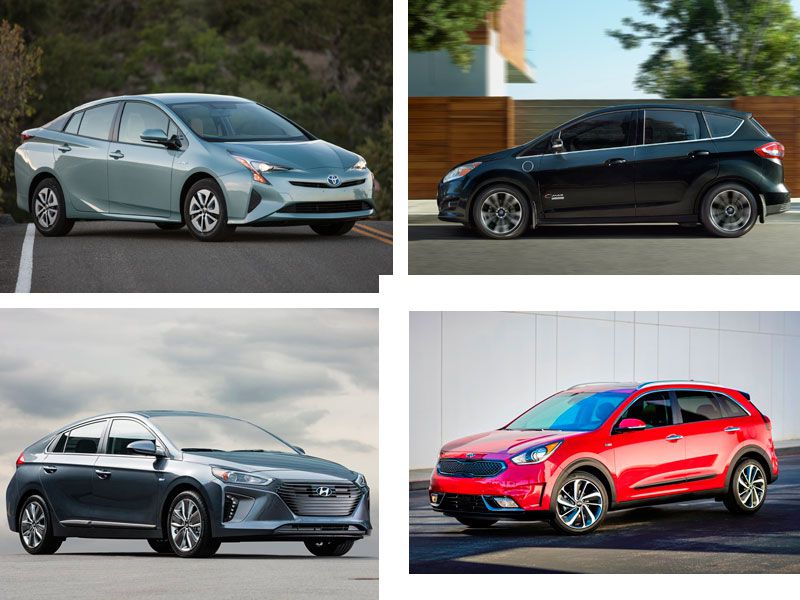Recent Articles
Popular Makes
Body Types
2017 Kia Niro Road Test and Review
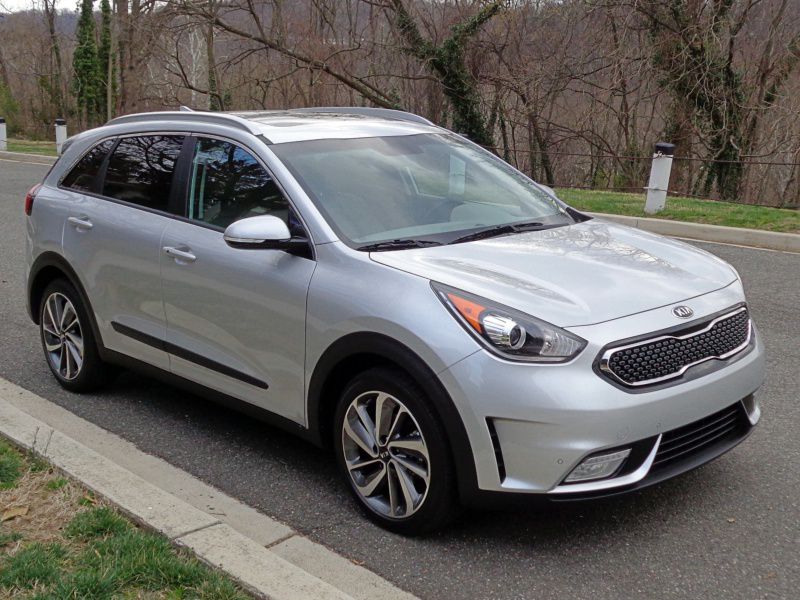
2017 Kia Niro hybrid by Brady Holt 2 ・ Photo by Brady Holt
When developing a hybrid car, designers generally drift back to a familiar silhouette: that of the iconic Toyota Prius. But it's not a matter of shameless mimicry. Rather, aerodynamics are forcing a visual similarity among such models as the Prius, the Chevrolet Volt, the late Honda Insight and the new Hyundai Ioniq. These gas-electric hatchbacks gain precious miles per gallon by minimizing wind resistance.
However, perhaps you don't want to make sacrifices while reducing your fuel consumption. Maybe you're looking for a low price. Maybe you want a roomier interior or higher seating position than a low-roofed hatchback can offer. Or maybe you simply don't want to see any resemblance to a Prius.
Enter the 2017 Kia Niro. A mechanical cousin to the Ioniq hatchback, this all-new hybrid strives to offer the pleasant, functional, stylish and affordable ownership of an ordinary sub compact crossover — all while achieving EPA ratings of up to 50 mpg.
Bargain Pricing
With many eco-friendly cars, it's easy to be wowed by many compelling strong points — and then spot an astronomical price tag. With its base price of $22,890, the Niro avoids that drawback. Factor in this Kia's generous standard equipment, and it's comparably priced to the popular Honda HR-V in the subcompact crossover segment. The Niro also compares favorably to the other two tall roomy hybrids: the Ford C-Max ($24,275) and Toyota Prius v ($26,675). It even undercuts the smaller standard Prius ($23,475) and starts at a mere $690 more than its Hyundai Ioniq platform-mate.
Even the tested top-of-the-line Niro Touring model remains reasonable, with a sticker price of $30,545 with all the extra fixings: leather seats, a panoramic sunroof, heated and cooled front seats, a premium sound system and in-dash navigation. Also, Kia generously offers an optional emergency automatic braking system — a valuable and sometimes hard-to-find safety feature — on all but the base FE model.
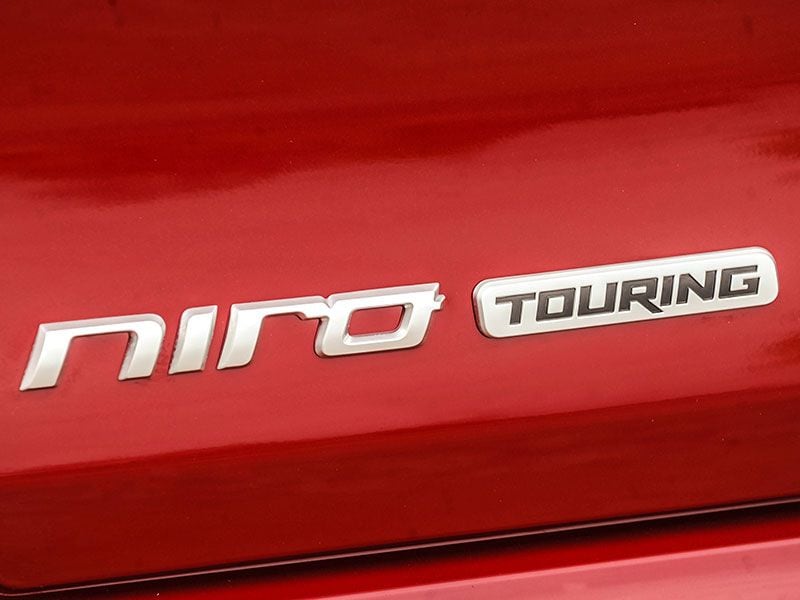
Photo by Kia
Car or Crossover?
In most pictures, the Niro looks quite like a crossover, with a boxy shape and familial resemblance to Kia's larger Sportage. In person, it's clearer that this is a compact vehicle and not a tall one, which reduces the effect to some extent. Regardless, the Niro's clean styling will border on bland for some tastes, but others will welcome Kia's design restraint in contrast to the latest Prius.
Note that despite being marketed as a crossover, the Niro doesn't offer all-wheel drive. You also won't have a high seating position, though every Niro does come standard with a height-adjustable driver's seat.
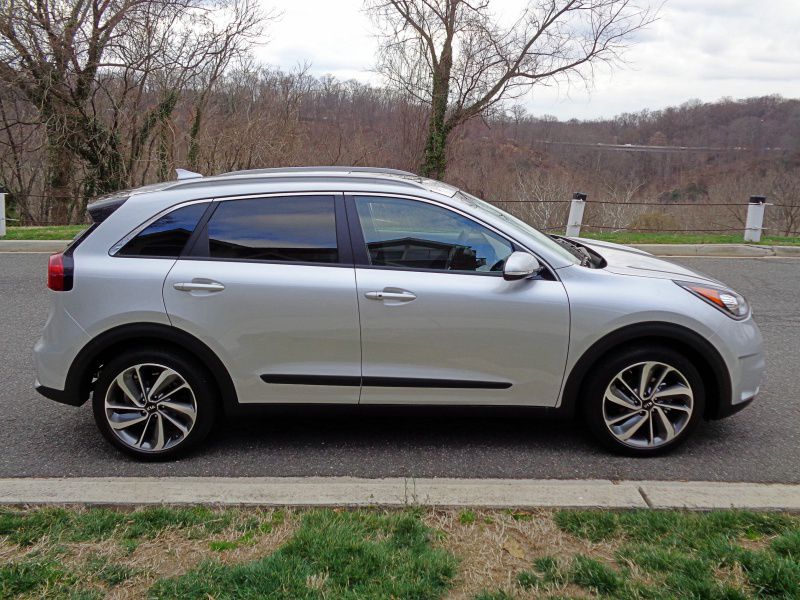
Photo by Brady Holt
Respectable Interior
The Niro's cabin continues the exterior's clean, simple design aesthetic. This Kia could be any affordable crossover, albeit one with particularly impressive materials and build quality for the money. The dashboard is attractively styled but relatively anonymous, except for an “Eco Hybrid” badge next to the infotainment system's touchscreen. Perhaps most importantly, the Niro has extra-simple user-friendly controls. Android Auto or Apple CarPlay smartphone integration comes standard on all Niros.
The gauge cluster looks a little more hybrid-specific. Instead of a tachometer displaying the engine's RPM, a gauge indicates whether you're driving efficiently, demanding extra power, or coasting or braking to automatically recharge the car's electric battery. You can also display fuel efficiency information on the dashboard touchscreen.
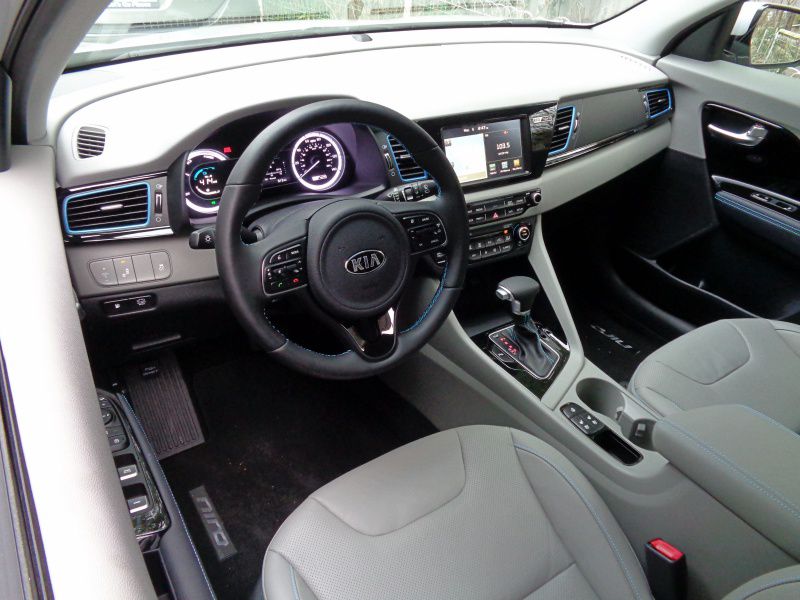
Photo by Brady Holt
Normal Driving Experience
In developing the Ioniq and Niro, Hyundai and Kia prioritized making their hybrids look and feel normal. That is to say, the experience was supposed to avoid screaming “hybrid.” As intended, the Niro feels solid as it cruises down the road, not like an insubstantial economy car. And it uses a conventional six-speed automatic transmission, which results in less engine drone than you'd get from the continuously variable transmission, or CVT, that's found in most hybrids. That said, the Niro doesn't deliver a downright exceptional driving experience. With just 139 horsepower on tap, the gas-electric powertrain can't really manage punchy acceleration. The ride is on the bumpy side and allows some extra road noise. The steering feels natural and decently responsive but not quite sporty. The aforementioned solid feel is appreciated at this size and price point, but the Niro is closer to unobjectionable than to truly impressive to drive.
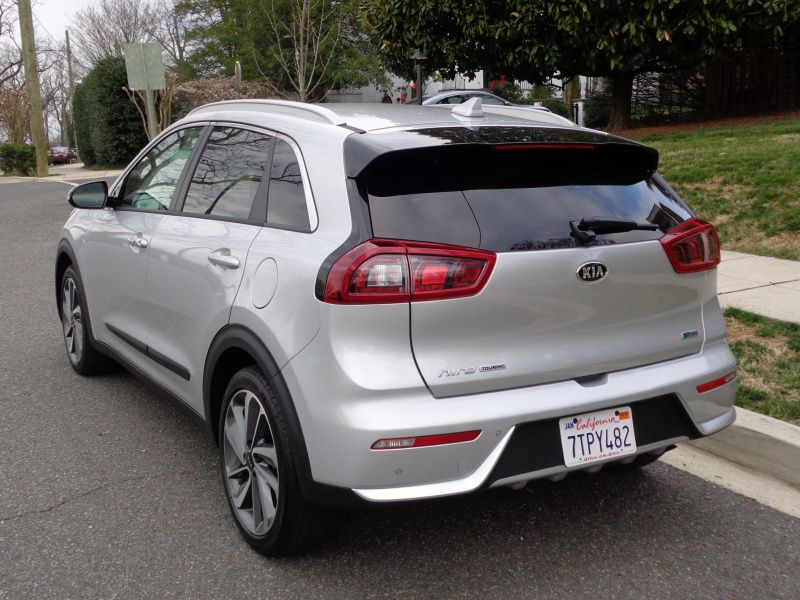
Photo by Brady Holt
Fuel-Sipping Powertrain
Hybrid vehicles use a gasoline engine that works in concert with a small electric motor. The latter assists the engine when you're accelerating hard, and can even take over completely in mild conditions like a steady cruise. The Niro's 104-horsepower 1.6-liter four-cylinder gasoline engine and a 43-hp electric motor combine to secure an attention-getting EPA rating of 50 mpg in mixed driving on the base FE model — 52 mpg city, 49 mpg highway. Note, though, that those figures decline as you work your way up the Niro's trim ladder. The LX and EX models slip to 49 mpg overall (51 city/46 highway), and the tested Touring drops all the way to 43 mpg overall (46 city/40 highway).
While those figures can't compare to the Hyundai Ioniq's EPA ratings of 55 to 58 mpg overall or the Prius' figures of 52 to 56 mpg, the Niro is still quite impressive in any other respect. A Prius v is rated for 41 mpg overall, a Ford C-Max hits 40 mpg and the non-hybrid Honda HR-V is rated for just 31 mpg.
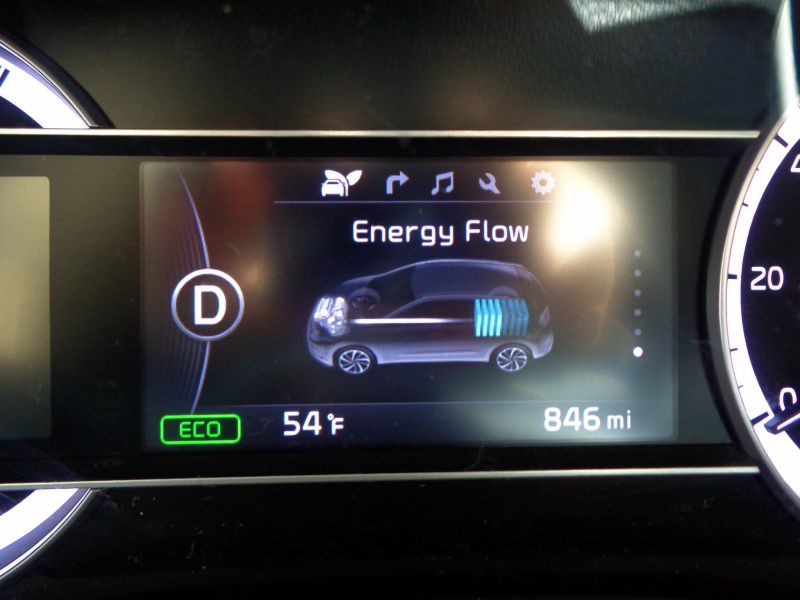
Photo by Brady Holt
Your Mileage May Vary
In any car, adjusting your driving style can significantly improve or reduce your fuel efficiency. That's especially true in a hybrid, where the gentlest touch on the accelerator can often help you get around gas-free using only the small electric motor. But the tested Niro — heavier and less aerodynamic than a Prius or Ioniq — wasn't as willing to stay in all-electric mode. The Ioniq is already more likely than the Prius to need its gasoline engine to accelerate, and the tested Niro Touring proved the least willing of the three to operate under purely electric propulsion.
Accordingly, the Niro's engine is usually running except while you cruise at a relatively low and steady speed. The result was a weeklong average of 48 mpg in careful driving — excellent by most standards, but no Prius. On the flip side, if you don't plan to baby your new hybrid to maximize all-electric operation, you'll see less of a difference between the Kia and the Toyota.
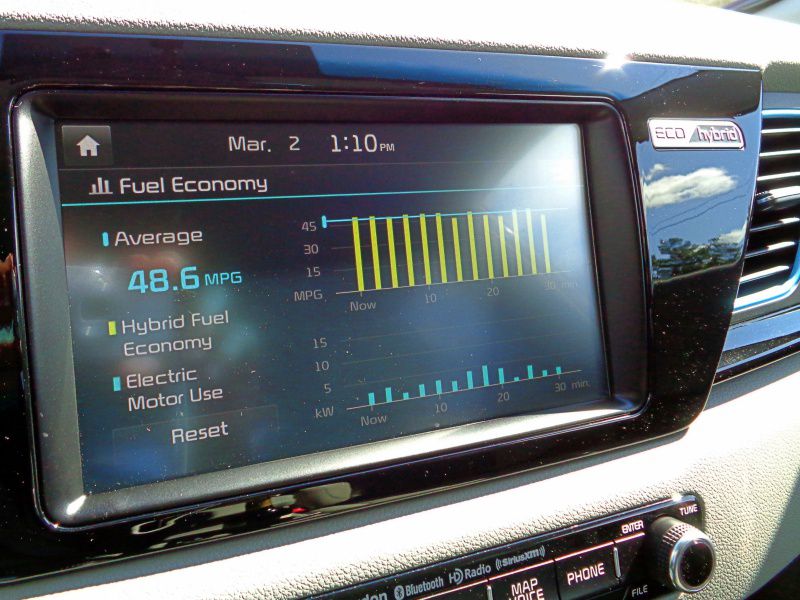
Photo by Brady Holt
Practical Interior
While the Niro's gas mileage doesn't match a Prius or Ioniq, you can fold down the Kia's rear seat to get a comparatively generous 54.5 cubic feet of cargo space. Moreover, the taller and boxier Niro is better-equipped to handle bulky cargo than those lower hatchbacks. Overall, cargo capacity competes well in the subcompact crossover class. The much pricier Prius v does have more room, though.
The Niro can also seat four adults comfortably, and five in a pinch. Rear legroom dwindles if the front seats are all the way back, but it's fine for normal-sized passengers. Drivers don't have a toweringly high seating position, but they enjoy good outward visibility in all directions. In particular, unlike the two-part rear windshield in the Prius or Ioniq, the Niro provides a normal rearward view.
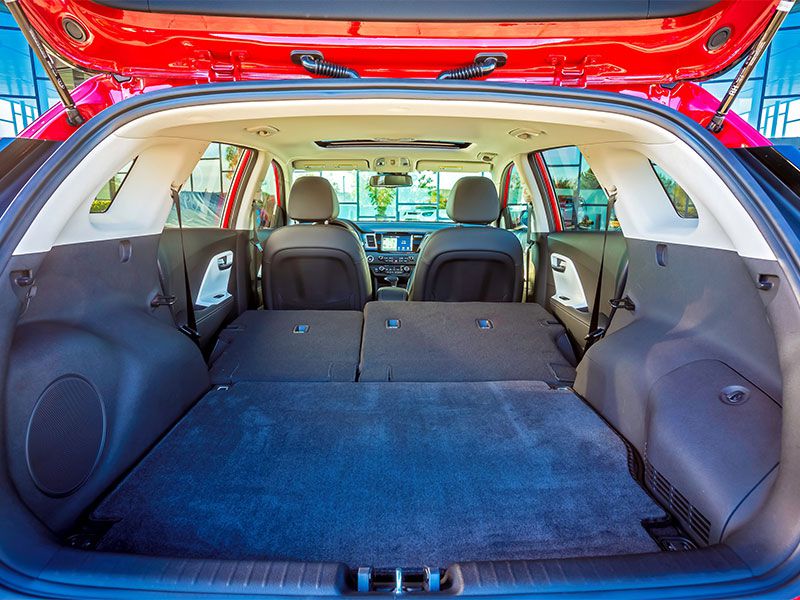
Photo by Kia
Safe Option
The Niro hasn't yet been crash-tested by the Insurance Institute for Highway Safety or the National Highway Traffic Safety Administration. But given that it's an all-new design, there's reason to be optimistic that this Kia will perform well.
Various optional features also help the driver avoid a collision in the first place. The Advanced Technology Package includes a forward-collision warning, emergency automatic braking, and a lane-departure warning, and it's available on all but the base Niro FE model. The EX and Touring also include blind-spot and rear cross-traffic monitoring, and all models have a standard rearview camera.
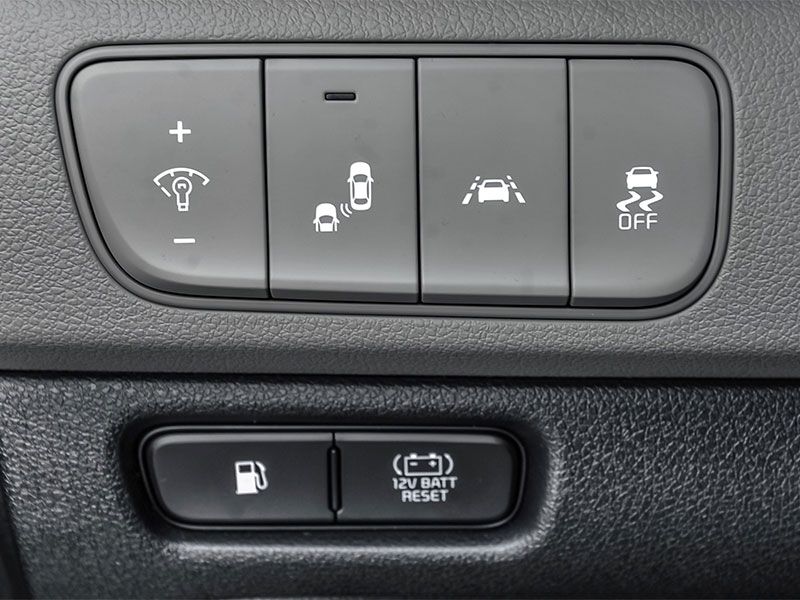
Photo by Kia
The Competition
The Niro can be shopped against a host of competitors. There's the less roomy but more economical Prius and Ioniq. There's the roomy but dated and less thrifty Prius v and Ford C-Max hybrids. There's a host of non-hybrid sub compact crossovers, such as the Chevrolet Trax, Honda HR-V and Toyota C-HR. You can even consider the Niro against Kia's affordable but much less efficient Soul, another vehicle that blurs the line between sub compact crossover and economy hatchback.
In this crowd, the Niro is an impressive blend of value, fuel efficiency, interior space and driving dynamics. You can find competitors with more space, better mileage, sportier or more luxurious driving experiences, or lower prices. But Kia has managed to offer an all-around decent sub compact crossover that — in addition to general user-friendly comfort and competence — also manages to achieve up to 50 mpg. That's not a combination you'll want to ignore.
